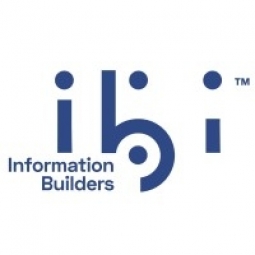Customer Company Size
Large Corporate
Region
- America
Country
- United States
Product
- Information Builders Cloud
- WebFOCUS
- InfoAssist
Tech Stack
- Amazon Web Services (AWS)
- Oracle
Implementation Scale
- Enterprise-wide Deployment
Impact Metrics
- Productivity Improvements
- Cost Savings
Technology Category
- Infrastructure as a Service (IaaS) - Cloud Computing
- Analytics & Modeling - Real Time Analytics
Applicable Industries
- Education
Applicable Functions
- Business Operation
Use Cases
- Real-Time Location System (RTLS)
Services
- Cloud Planning, Design & Implementation Services
- Data Science Services
About The Customer
Colorado State University (CSU) is a research-intensive public land-grant university located in Fort Collins, Colorado. It has more than 33,000 students, nearly 2,000 faculty, and over 2,500 administrative staff. The university offers a comprehensive array of undergraduate and graduate programs through eight individual colleges. By statute, there are also four State agencies assigned to CSU: the Colorado Agricultural Experiment Station, Extension, the Colorado State Forest Service, and the Colorado Water Center. Data and analytics drive many of these academic initiatives and data is also critical to the many back-office administrative functions that keep the university running smoothly, from finance to human resources (HR), admissions to institutional research.
The Challenge
As Colorado State University's analytics endeavors expanded to include many types of data and reporting tools, the institution’s faculty and staff members had a difficult time obtaining consistent data. People were showing up at meetings with conflicting numbers due to inconsistent operational definitions and the lack of a central reporting platform. The university needed one centrally supported platform that could deliver one version of the truth. Campus constituents wanted a cloud-based solution that could improve student outcomes through predictive analytics, boost operational efficiencies, and differentiate CSU from other institutions with externally facing dashboards and fact books.
The Solution
CSU's Information Services (IS) department led the effort to select one enterprise platform that could fulfill the analytics needs of the entire university. They chose to use Information Builders Cloud, a fully managed solution that combines data management and analytics technology, hosted on Amazon Web Services (AWS). Since going live with Information Builders Cloud, the university has created a centralized analytics platform that consolidates more than 15,000 financial reports from multiple data sources, departments, and reporting environments. The Office of Institutional Research, Planning and Effectiveness developed an externally facing dashboard that prospective students and their parents can use to get to know the various departments and majors at the university. A portal built on Information Builders’ WebFOCUS business intelligence (BI) and analytics platform includes InfoApps targeted to specific domains, such as student enrollment, degrees conferred, entering freshman characteristics, and student success.
Operational Impact
Quantitative Benefit

Case Study missing?
Start adding your own!
Register with your work email and create a new case study profile for your business.
Related Case Studies.

Case Study
Revolutionizing Medical Training in India: GSL Smart Lab and the LAP Mentor
The GSL SMART Lab, a collective effort of the GSL College of Medicine and the GSL College of Nursing and Health Science, was facing a challenge in providing superior training to healthcare professionals. As clinical medicine was becoming more focused on patient safety and quality of care, the need for medical simulation to bridge the educational gap between the classroom and the clinical environment was becoming increasingly apparent. Dr. Sandeep Ganni, the director of the GSL SMART Lab, envisioned a world-class surgical and medical training center where physicians and healthcare professionals could learn skills through simulation training. He was looking for different simulators for different specialties to provide both basic and advanced simulation training. For laparoscopic surgery, he was interested in a high fidelity simulator that could provide basic surgical and suturing skills training for international accreditation as well as specific hands-on training in complex laparoscopic procedures for practicing physicians in India.

Case Study
IoT platform Enables Safety Solutions for U.S. School Districts
Designed to alert drivers when schoolchildren are present, especially in low-visibility conditions, school-zone flasher signals are typically updated manually at each school. The switching is based on the school calendar and manually changed when an unexpected early dismissal occurs, as in the case of a weather-event altering the normal schedule. The process to reprogram the flashers requires a significant effort by school district personnel to implement due to the large number of warning flashers installed across an entire school district.

Case Study
Implementing Robotic Surgery Training Simulator for Enhanced Surgical Proficiency
Fundacio Puigvert, a leading European medical center specializing in Urology, Nephrology, and Andrology, faced a significant challenge in training its surgical residents. The institution recognized the need for a more standardized and comprehensive training curriculum, particularly in the area of robotic surgery. The challenge was underscored by two independent studies showing that less than 5% of residents in Italian and German residency programs could perform major or complex procedures by the end of their residency. The institution sought to establish a virtual reality simulation lab that would include endourological, laparoscopic, and robotic platforms. However, they needed a simulator that could replicate both the hardware and software of the robotic Da Vinci console used in the operating room, without being connected to the actual physical console. They also required a system that could provide both basic and advanced simulation training, and a metrics system to assess the proficiency of the trainees before they performed surgical procedures in the operating theater.

Case Study
Edinburgh Napier University streamlines long-distance learning with Cisco WebEX
• Geographically dispersed campus made in-person meetings costly and inconvenient.• Distance-learning programs in Malaysia, India, and China required dependable, user-friendly online tools to maximize interaction in collaborative workspaces.• Virtual learning environment required a separate sign-in process, resulting in a significant administrative burden for IT staff and limited adoption of collaboration technology.

Case Study
8x increased productivity with VKS
Before VKS, a teacher would spend a lot of time showing a group of 22 students how to build a set of stairs within a semester of 120 hours. Along with not leaving the teacher much time to provide one-on-one support for each student to properly learn carpentry, it also left a considerable amount of room for error. Key information would be misinterpreted or lost as the class was taught in the typical show-and-tell way.

Case Study
Scalable IoT Empowering GreenFlex's Sustainable Growth
GreenFlex, a company that supports sustainable development, decarbonization, and energy efficiency, faced several challenges in its quest to expand its business. The company needed to deploy a robust and sustainable IoT technology to support its growth. It was crucial for them to monitor and control devices at customer sites in a safe and reliable manner. They also needed to integrate devices across a range of communication protocols and gather and act on data to meet efficiency targets. GreenFlex had previously built IoT capabilities into its digital platform, GreenFlexIQ, to monitor and manage customer sites remotely. However, they soon realized that they needed a new platform to support their ambitions. They needed a platform that could scale to connect more devices for production management and make it easier for the operations team to manage devices in the field.







